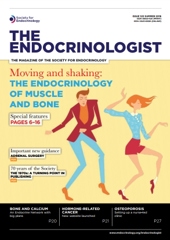Osteoporosis affects around 6% of men and 21% of women aged 50–84 years in the EU, and is estimated to cost €37 billion per annum.1 Much of the health and economic cost is due to fragility fractures. Vertebral fractures are frequently missed, and there remains a need for early and accurate diagnosis to reduce mortality and morbidity.2
In the last decade, the huge growth in nurse-led clinics (NLCs) has enabled patients to access specialist healthcare in a more timely manner. This area of nursing practice is rapidly becoming an advanced specialism, with many clinics requiring practitioners to undertake physical assessment, care planning, medicines management (e.g. independent or supplementary nurse prescribing), health promotion and health education.3
In setting up an osteoporosis NLC, nurses must consider logistical, management, clinical and financial issues. The ‘10 essential steps to setting up a service’ shown here are adapted from those proposed by Hatchett in 2008.4
10 steps to setting up an osteoporosis NLC
-
Build a business case
This explains why the clinic is needed and what it will offer patients and the organisation, and gives a clear overview of the running costs. Several sources of guidance are available, including the Chartered Institute of Personnel Development.5
-
Define aims and objectives
The clinic must have well-defined aims. Importantly, defining the objectives will ensure it doesn’t duplicate another service in the same Trust.
-
Establish patient criteria
Referral criteria should be clearly defined so only appropriate patients are seen. They should be specific and narrow (e.g. aged >65 years, suspected or confirmed fragility fracture/s) and should be available to all potential service users (patients and other healthcare professionals).
-
Create publicity
To ensure success, patients and referrers must know the service exists and what it offers. NLC protocols/guidelines, posters, web information, group discussions and patient information leaflets can be used for publicity.
-
Identify clinic time and location
Issues to take into consideration include the fact that most patients will be elderly, whether the clinic should be held alongside or separate from the consultant clinic, and the availability of administrative support, phlebotomy and bone mineral density X-ray absorptiometry (DXA) scan facilities.
-
Engage multidisciplinary support
'The NLC is an evolving service. The nurses' knowledge, skills and job descriptions should keep pace with changes in osteoporosis practice'
An effective clinic must work collaboratively with colleagues in rheumatology, metabolic bone, endocrinology, fracture liaison, nuclear medicine, physiotherapy/occupational therapy, pain management, trauma and orthopaedics, elderly care, phlebotomy and biochemistry, as well as with general practitioners, practice nurses and patient support groups such as the National Osteoporosis Society (NOS), amongst others. Nurses need to know who may refer into their service, who may take their referrals, and who can offer education and advice.
-
Undertake professional development
Nurses should engage in a continuous process of training and supervision to develop their skills in this specific area of advanced practice. Options include case reviews, short courses and conferences (such as the Society for Endocrinology’s Endocrine Nurse Update and BES conference, and the NOS conference), as well as observation of existing services and reading around the subject area.
There is no agreed national standard on the professional qualification that nurses require to run an NLC, but the Department of Health has issued guidance on the level of practice expected of nurses working at an advanced level.6
-
Plan medicine management
Prescribing vitamin D, calcium and anti-resorptive agents can be an essential part of the clinic. If nurse prescribing is identified as a key aspect of the service, nurses should complete training and ensure they maintain their professional competence in this area.7,8
-
Evaluate and audit
Once the service is established, evaluation will ascertain whether it delivers the right care, to the right patient, at the right time, so ensuring that it continues to focus on meeting patients’ needs. Others, such as specific organisational audits, may also be required. The process will highlight challenges to the service and provide ideas for future development. Pennery has outlined advice for measuring the effectiveness of a NLC.9
-
Close the loop
It is important to understand that the NLC is an evolving service. The nurses’ knowledge, guidelines, protocols, job descriptions and audit/evaluation should keep pace with changes in osteoporosis practice. Gaps identified through the audit process should be acted upon within a reasonable time.
Shashana Shalet
Endocrine Advanced Nurse Practitioner, Salford Royal NHS Foundation Trust
Sherwin Criseno
Endocrine Lead Clinical Nurse Specialist, University Hospitals Birmingham NHS Foundation Trust
REFERENCES
- Hernlund E et al. 2013 Archives of Osteoporosis 8 doi:10.1007/s11657-013-0136-1.
- Cummings SR & Melton LJ 2002 Lancet 359 1761–1767.
- Hatchett R (Ed) 2003 Nurse-Led Clinics: Practice Issues. London: Routledge.
- Hatchett R 2008 Nursing Times 104 62–64.
- Chartered Institute of Personnel Development 2016.
- Department of Health 2010 Advanced Level Nursing: A Position Statement.
- Bramley I 2006 Nurse Prescribing 4 117–120.
- Department of Health, Social Services & Public Safety 2016 Prescribing by Non-Medical Healthcare Professionals.
- Pennery E 2003 In Nurse-led Clinics: Practice Issues Ed R Hatchett. London: Routledge.





